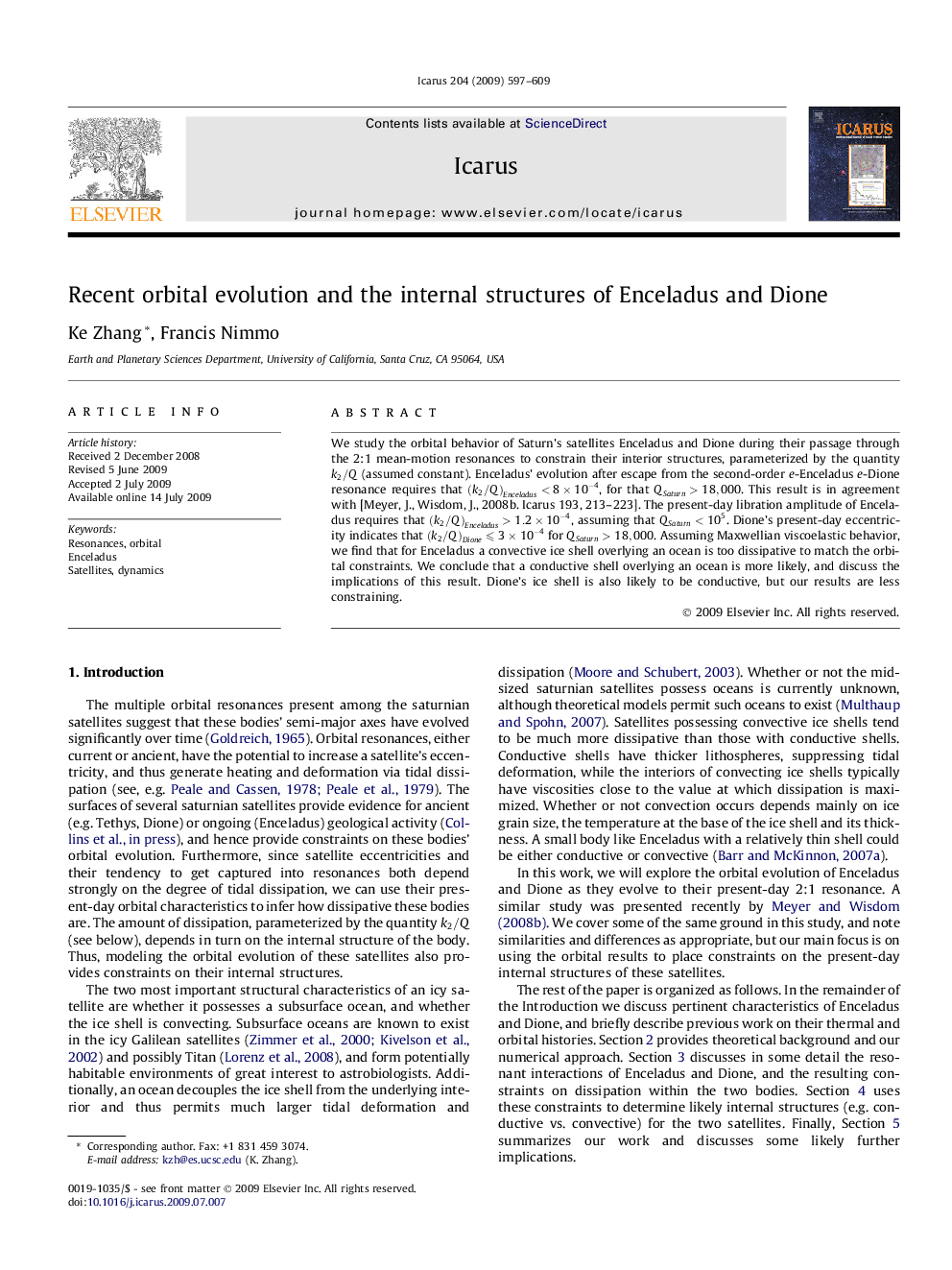| Article ID | Journal | Published Year | Pages | File Type |
|---|---|---|---|---|
| 1774758 | Icarus | 2009 | 13 Pages |
We study the orbital behavior of Saturn’s satellites Enceladus and Dione during their passage through the 2:1 mean-motion resonances to constrain their interior structures, parameterized by the quantity k2/Qk2/Q (assumed constant). Enceladus’ evolution after escape from the second-order e-Enceladus e -Dione resonance requires that (k2/Q)Enceladus<8×10-4(k2/Q)Enceladus<8×10-4, for that QSaturn>18,000QSaturn>18,000. This result is in agreement with [Meyer, J., Wisdom, J., 2008b. Icarus 193, 213–223]. The present-day libration amplitude of Enceladus requires that (k2/Q)Enceladus>1.2×10-4(k2/Q)Enceladus>1.2×10-4, assuming that QSaturn<105QSaturn<105. Dione’s present-day eccentricity indicates that (k2/Q)Dione⩽3×10-4(k2/Q)Dione⩽3×10-4 for QSaturn>18,000QSaturn>18,000. Assuming Maxwellian viscoelastic behavior, we find that for Enceladus a convective ice shell overlying an ocean is too dissipative to match the orbital constraints. We conclude that a conductive shell overlying an ocean is more likely, and discuss the implications of this result. Dione’s ice shell is also likely to be conductive, but our results are less constraining.
